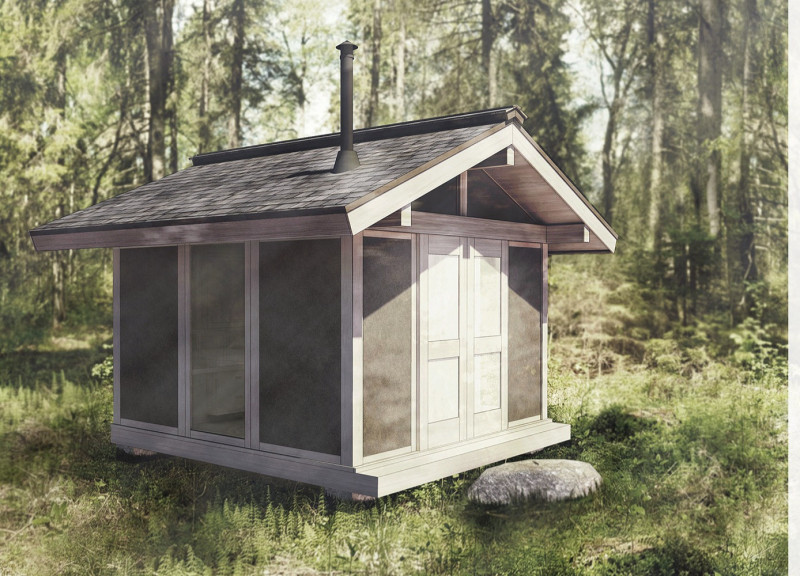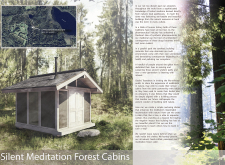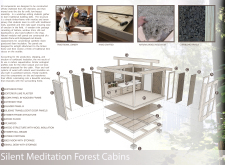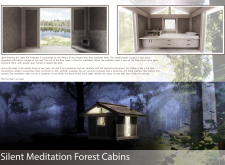5 key facts about this project
The Silent Meditation Forest Cabins project embodies a purposeful connection between architecture and the natural environment, serving as a retreat designed for meditation and self-reflection. The project focuses on creating a harmonious space that encourages occupants to engage with their surroundings while providing basic amenities in a sustainable manner.
The cabins are designed with a minimalist approach, emphasizing simplicity and functionality. Key elements include a timber frame structure that supports large glazed openings, allowing abundant natural light and panoramic views of the forest. The floor plan is carefully executed to maximize usable space, incorporating built-in storage solutions that reduce clutter and maintain a tranquil environment.
Sustainability is a central theme in this project, reflected through the selection of eco-friendly materials and construction methods. The use of local timber not only minimizes transportation emissions but also ensures that the structure resonates with its context. The choice of insulation materials, such as cork and natural wool, contributes to the thermal performance of the cabins while remaining environmentally conscious.
Unique Design Approaches
The Silent Meditation Forest Cabins distinguish themselves through their innovative off-site construction methodology. This approach allows for greater control over the quality of craftsmanship and minimizes disruption to the natural site during construction. By involving students in the building process, the project also promotes educational opportunities that reinforce traditional building techniques and a hands-on understanding of sustainable architecture.
Incorporating features such as composting toilets and solar-heated showers illustrates a commitment to reducing the ecological footprint of the cabins. These amenities enable occupants to experience modern conveniences while adhering to principles of sustainability. Moreover, the strategic placement of windows and sliding doors facilitates a deep connection with the surrounding landscape, fostering mindfulness as occupants engage with the elements.
Functionality and Interior Design
The spatial organization within each cabin is intentionally designed to create a retreat atmosphere. The separation of the sleeping area from communal spaces enhances privacy and allows for uninterrupted meditation. The minimalist aesthetic is carried through to the interior finishes, which are characterized by natural materials contributing to a calming atmosphere. Textural contrasts between wood, cork, and lime plaster create a sensory experience that complements the project's purpose.
In summary, the Silent Meditation Forest Cabins stand as a thoughtful exploration of architectural principles rooted in sustainability and mindfulness. By emphasizing functionality, eco-friendly materials, and a deeper connection with nature, this project offers educators, architects, and nature enthusiasts a valuable case study in contemporary architectural design. For a comprehensive understanding of the Silent Meditation Forest Cabins, viewers are encouraged to review architectural plans, sectional drawings, and innovative design elements that showcase the project in detail.






















































